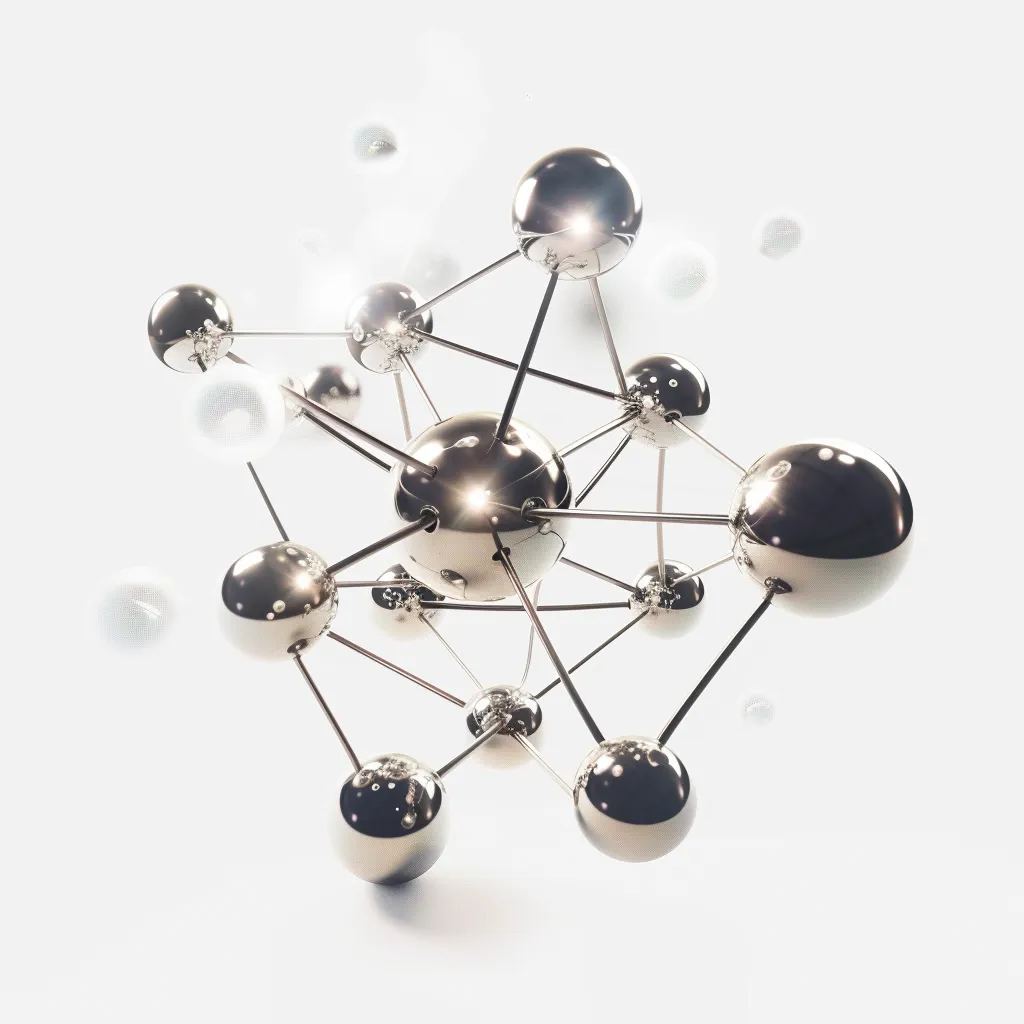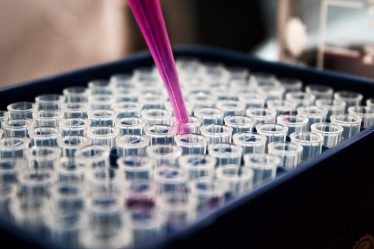
Metallic bonds form when free electrons move through a lattice of positively charged metal ions.
This electron movement explains key properties of metals, such as their ability to conduct electricity and resist breaking under stress.
Metals are widely used due to their durability, conductivity, and malleability—all of which result from the strong metallic bonds between their atoms.
Metallic Bonds: Quick Summary
Do you just need the basics? Here’s a simple explanation of what is a metallic bond:
🟠 Metallic bonds form when metal atoms share freely-moving electrons, which explains why metals conduct electricity and are durable.
🟠 The electron sea model shows how delocalized electrons in metals create a structure that allows for the easy flow of electricity and heat.
🟠 Electrical conductivity in metals is high because free electrons can easily flow through the structure when a voltage is applied.
🟠 Malleability and ductility result from metallic bonds that let atoms shift without breaking, making metals easy to shape or stretch into wires.
🟠 Metal crystals form when metal atoms are arranged in a repeating pattern, creating a stable lattice held by metallic bonds.
🟠 Alloys are mixtures of metals that improve strength, conductivity, and resistance to corrosion, making them useful in technology and construction.
If you find the properties of metallic bonds challenging, don’t worry! Personalized tutoring or interactive chemistry lessons make these concepts more straightforward. Explore more chemistry topics and broaden your knowledge with our free World of Chemistry blogs.
What is a Metallic Bond: Key Features Explained
A metallic bond forms when metal atoms share a pool of free-moving electrons, creating a strong bond that holds the atoms together.
This differs from ionic bonds, where electrons are transferred between atoms, or covalent bonds, where electrons are shared between two atoms. Metallic bonds allow electrons to move freely between metal atoms in a structure called the “electron sea.”
In this electron sea, the outer electrons of each atom become delocalized, meaning they are not attached to any specific atom. These free-moving electrons are responsible for many of the unique properties of metals, such as electrical conductivity and malleability.
The flexible bond lets metal atoms slide past each other without breaking, which is why metals can be shaped, stretched, or drawn into wires without shattering.
The Electron Sea Model: How Electrons Flow in Metals
The electron sea model explains how metals bond by allowing their outer electrons to move freely throughout the entire structure. These free-moving or delocalized electrons form a shared pool, or “electron sea,” surrounding positively charged metal ions. In this model, no single electron belongs to any specific atom.
This sea of delocalized electrons holds the positively charged ions in place, creating a solid and organized metallic lattice. The flexibility of this bond allows metal atoms to shift without breaking, which explains why metals are malleable (easily shaped) and ductile (stretched into wires).
The movement of these electrons also makes metals highly conductive. When an electric field is applied, the electrons flow easily through the lattice, carrying a current. This same free movement allows metals to transfer heat efficiently.
In summary, the electron sea model helps explain why metals are so conductive, flexible, and durable.
Metallic Bonds and Metal Properties
Metallic bonds give metals their key properties, making them useful in countless applications. The free movement of delocalized electrons in metals leads to high electrical conductivity, flexibility, and a shiny appearance. These properties result from the unique structure of metallic bonds, where electrons are not tied to individual atoms.
Key Properties of Metallic Bonds
🟠 Delocalized electrons: Electrons move freely through the structure, enabling high conductivity in metals.
🟠 Malleability: Metals can be hammered into thin sheets because their atoms can slide past one another without breaking the bond.
🟠 Ductility: The non-directional nature of metallic bonds allows metals to be stretched into wires.
🟠 Metallic luster: Free electrons in metals reflect light, giving metals their shiny appearance.
Electrical Conductivity in Metals: How Metallic Bonds Allow Electron Flow
Metallic bonds make metals highly conductive. In metals, delocalized electrons move freely through the structure, allowing for easy electron flow when an electric field is applied. These free electrons carry electrical charge through the metal, making materials like copper and aluminum excellent conductors of electricity. That’s why metals are the primary choice for wiring and electrical circuits.
In comparison, insulators such as plastic or rubber have tightly bound electrons, which block the flow of electricity. Metals, with their mobile electron sea, offer much lower resistance to current, making them far superior in conducting electricity compared to materials like wood or glass.
Malleability and Ductility: Why Metals Can Bend and Stretch
The flexibility of metallic bonds explains why metals can bend, stretch, and be shaped without breaking. In metals, the delocalized electrons move around freely, allowing metal atoms to shift position while maintaining the bond. This non-directional bond enables metals to be malleable (able to be hammered into sheets) and ductile (able to be stretched into wires).
These properties are crucial for practical uses, such as forming thin sheets of steel for car bodies or creating long copper wires for electrical grids. Metals can be reshaped under pressure without shattering, making them essential for many industries.
Metallic Luster: Why Metals Are Shiny
Metals have a characteristic shine, or metallic luster, because of how their delocalized electrons interact with light. When light hits a metal surface, the electrons absorb and reflect the photons, producing a shiny, reflective appearance.
This makes metals like gold, silver, and aluminum highly reflective and ideal for use in mirrors, jewelry, and decorative surfaces. The metallic luster is one of the easiest ways to identify metals and differentiate them from non-metallic materials.
Crystal Structures in Metals: Metal Crystals and Lattices
Metal atoms are arranged in repeating patterns known as metal crystals, where atoms form organized structures called lattices. These lattices are held together by metallic bonds, where delocalized electrons flow freely around positively charged metal ions. The flexibility of metallic bonds allows metal ions to pack closely together in specific geometric patterns, creating stable crystal structures.
There are several common crystal structures found in metals, including face-centered cubic (FCC) and body-centered cubic (BCC) structures.
- In FCC structures, atoms are arranged at the corners and centers of each face of the cube, providing high density and strength. Metals like copper, aluminum, and gold have FCC structures.
- In BCC structures, atoms are positioned at the cube’s corners and in the center of the cube, forming a less dense but still strong arrangement. Examples of metals with BCC structures include iron and chromium.
Unlike the rigid, fixed bonds found in covalent structures, metallic bonds allow atoms to shift within the lattice without breaking. This flexibility distinguishes metal crystals from other solid structures, such as ionic crystals, where ions are held by strong directional bonds that can easily fracture.
Metallic Bonds in Everyday Applications
Metallic bonds are essential in many everyday tools, technologies, and industrial materials. These bonds give metals their strength, flexibility, and high conductivity, making them key components in everything from electronics to construction.
The ability of metals to conduct electricity, resist damage, and be easily shaped comes from the unique structure of metallic bonds.
Common Uses of Metallic Bonding in Technology and Industry
Metallic bonds enable metals to perform reliably in many everyday applications due to their durability and conductivity. Some common uses of metallic bonding include:
- Electrical wiring: Copper and aluminum wires conduct electricity efficiently because of their free-flowing electrons.
- Jewelry: Due to their malleability and lustrous appearance, gold, silver, and platinum are shaped into intricate designs.
- Construction materials: Steel and iron are used in building structures for their strength and ability to withstand pressure.
- Household appliances: Metals like stainless steel are used in kitchen equipment because of their durability and resistance to rust.
- Automobile manufacturing: Aluminum and steel are used in car frames for their balance of strength and lightweight properties.
Alloys: Combining Metals for Stronger Bonds
Alloys combine metals to create materials that are stronger and more versatile than their pure forms. In alloys, the arrangement of metallic bonds changes, increasing the material’s overall strength and resistance to wear.
For example, steel, an alloy of iron and carbon, is much stronger and more durable than pure iron, making it essential in construction. Bronze, made from copper and tin, is harder and more resistant to corrosion than either metal alone. Brass, a combination of copper and zinc, enhances strength and conductivity, making it useful in electrical components and instruments.
By altering the metallic bonds in alloys, engineers create materials that meet the specific needs of industries such as construction, transportation, and manufacturing.
Table: Metallic Bonds vs. Ionic and Covalent Bonds
The table below highlights the key differences between metallic, ionic, and covalent bonds. Each bond type influences the behavior of electrons, the bond strength, and the physical properties of the materials.
| Property | Metallic Bonds | Ionic Bonds | Covalent Bonds |
| Electron Behavior | Delocalized, free-moving electrons are shared across all atoms | Electrons are transferred between atoms (one gain, one loses) | Electrons are shared between specific atoms |
| Bond Strength | Strong but flexible, allowing atoms to move without breaking | Strong but brittle; breaks easily under force | Strong and directional; forms rigid structures |
| Conductivity | Excellent conductors of electricity and heat | Conduct electricity when dissolved in water (electrolytes) | Poor electrical conductivity (except for certain materials) |
| Physical Properties | Malleable, ductile, lustrous | Hard but brittle, forms solid crystals | Typically forms non-lustrous, brittle solids or gases |
This table helps differentiate the three main types of chemical bonds and explains how their structure impacts material properties.
Advance Your Knowledge of Metallic Bonds
Metallic bonds allow metals to be shaped, conduct electricity, and withstand heavy use without breaking. From everyday items like wiring and kitchen appliances to industrial applications such as construction and manufacturing, metallic bonds are the foundation of metals’ versatility and durability.
Are conductivity, ductility, and malleability tricky for you? A qualified chemistry instructor can explain complex topics in a way that makes sense to you, making organic and inorganic chemistry understandable and enjoyable.
Search for a tutor using phrases like “organic chemistry tutor Liverpool” or “inorganic chemistry teacher Edinburgh” on platforms like meet’n’learn. You’ll find someone who can tailor lessons to your needs.
If you prefer learning in a group, search for “chemistry classes Leeds” or “chemistry lessons London” online. The search will lead you to chemistry tutoring nearby.
Metallic Bond and Metal Crystals: Frequently Asked Questions
1. What is a metallic bond?
A metallic bond is a chemical bond where free electrons move through a lattice of positively charged metal ions, holding the structure together.
2. How do metallic bonds differ from ionic and covalent bonds?
Metallic bonds involve delocalized electrons, ionic bonds transfer electrons between atoms, and covalent bonds share electrons between specific atoms.
3. Why are metals good conductors of electricity?
Metals are good conductors because their free-moving, delocalized electrons can easily flow through the material when exposed to an electric field.
4. What is the electron sea model?
The electron sea model describes how delocalized electrons move freely within a metal, surrounding positively charged ions and forming metallic bonds.
5. What makes metals malleable and ductile?
The non-directional nature of metallic bonds allows metal atoms to slide past each other without breaking, making metals malleable and ductile.
6. What is a metal crystal?
A metal crystal is a solid structure in which metal atoms are arranged in a repeating pattern and held together by metallic bonds.
7. How do alloys strengthen metallic bonds?
Alloys strengthen metallic bonds by combining different metals, which enhances properties like strength, conductivity, and resistance to corrosion.
8. Why do metals have a shiny appearance?
Metals are shiny because their delocalized electrons reflect light, giving them a metallic luster.
References:
1. Study.com
2. Britannica
3. Wikipedia



